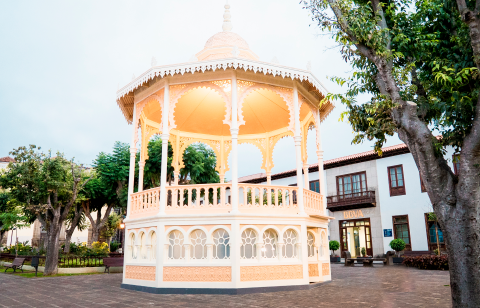
This public space was originally known as Llano de San Roque, because it was in the vicinity of the San Roque Chapel. The present-day San Agustín Church was built next to the old chapel, which you will see at the end of this square. The name Plaza Constitución dates back to the beginning of the 19th century, in homage to the 1812 Spanish Constitution.
The square is also popularly known as the kiosk square. It was not paved until 1902. The current paving is from that time. The central kiosk was built in the early 20th century for municipal music band performances. It is built in the neo-Mudejar style, an architectural movement that takes elements of Mudejar design and combines them with the newer materials of the early 20th century.
You can see the Taoro Lyceum from this square. It’s the imposing building that you’ll see crowning the tiered gardens in the part facing towards the mountain. The gardens are an architectural solution to the uneven ground between this square and the building, and actually enhance it. The building, built in an eclectic style, dates from 1928. It was acquired by the Taoro Lyceum Cultural Society in 1975. This Orotava society dates from the 19th century and has played an important role in the municipality's cultural revitalisation and diffusion of traditions.
Now let's head to the San Agustín Church located at the bottom of this square. Cross the street to find the next route code.



